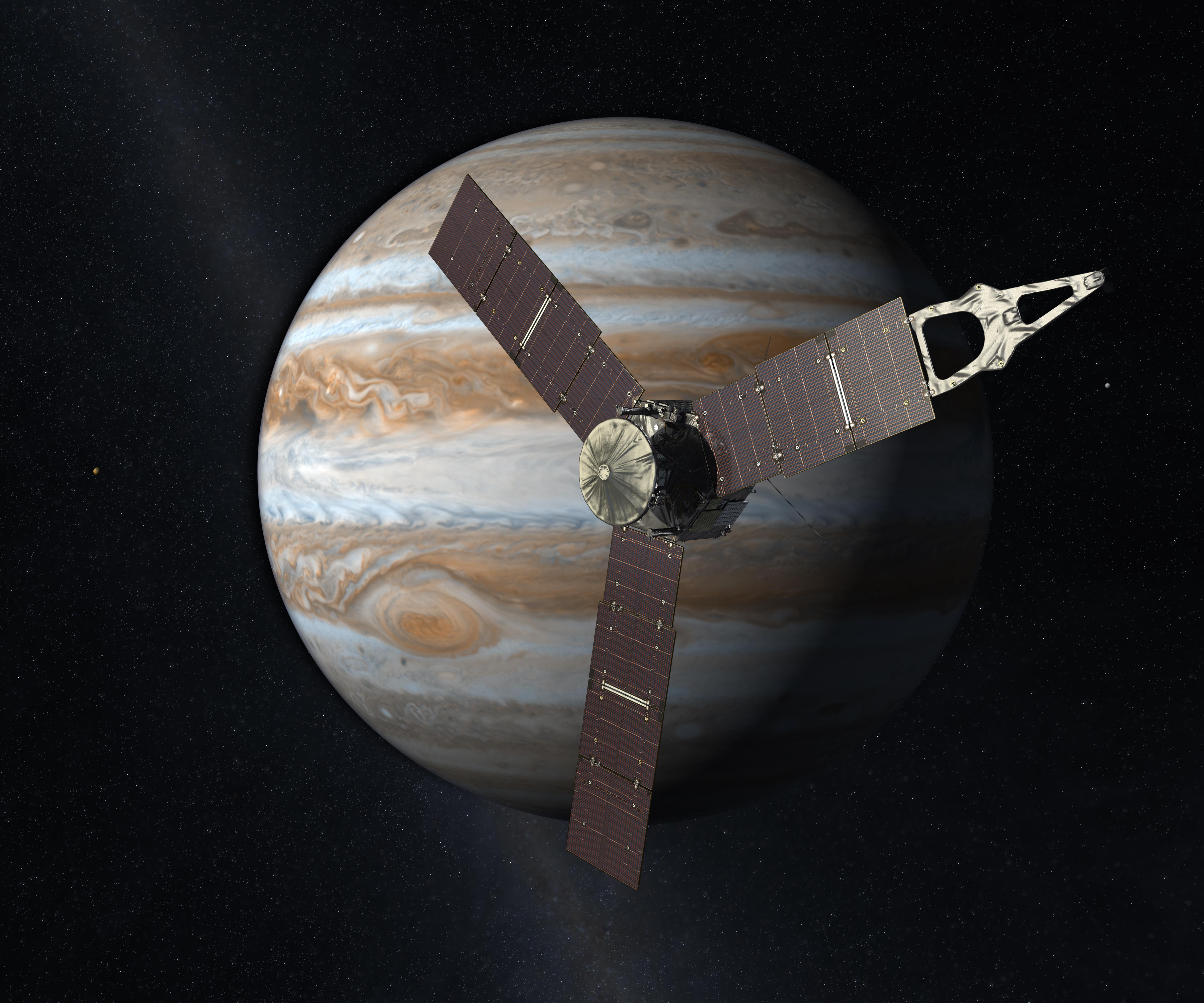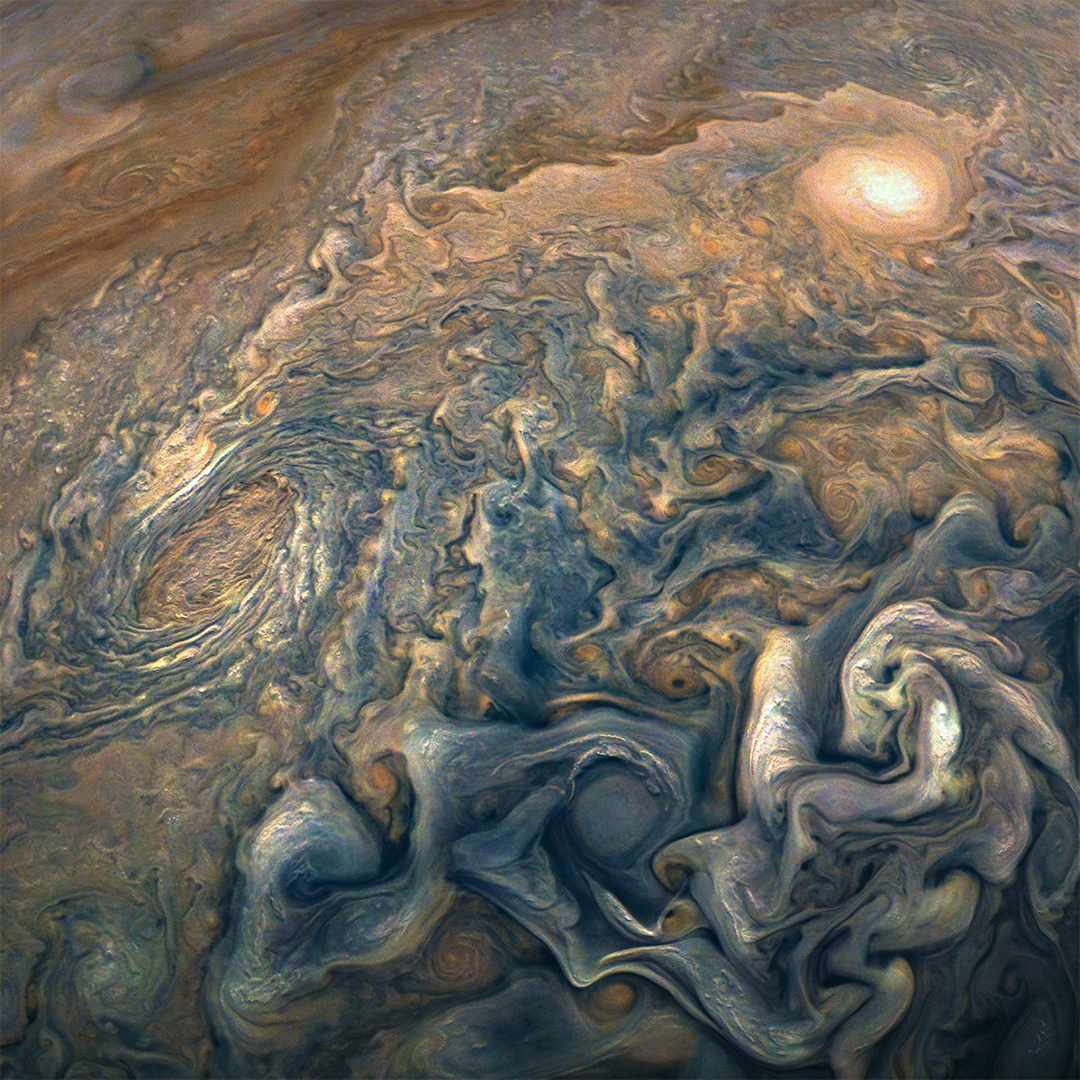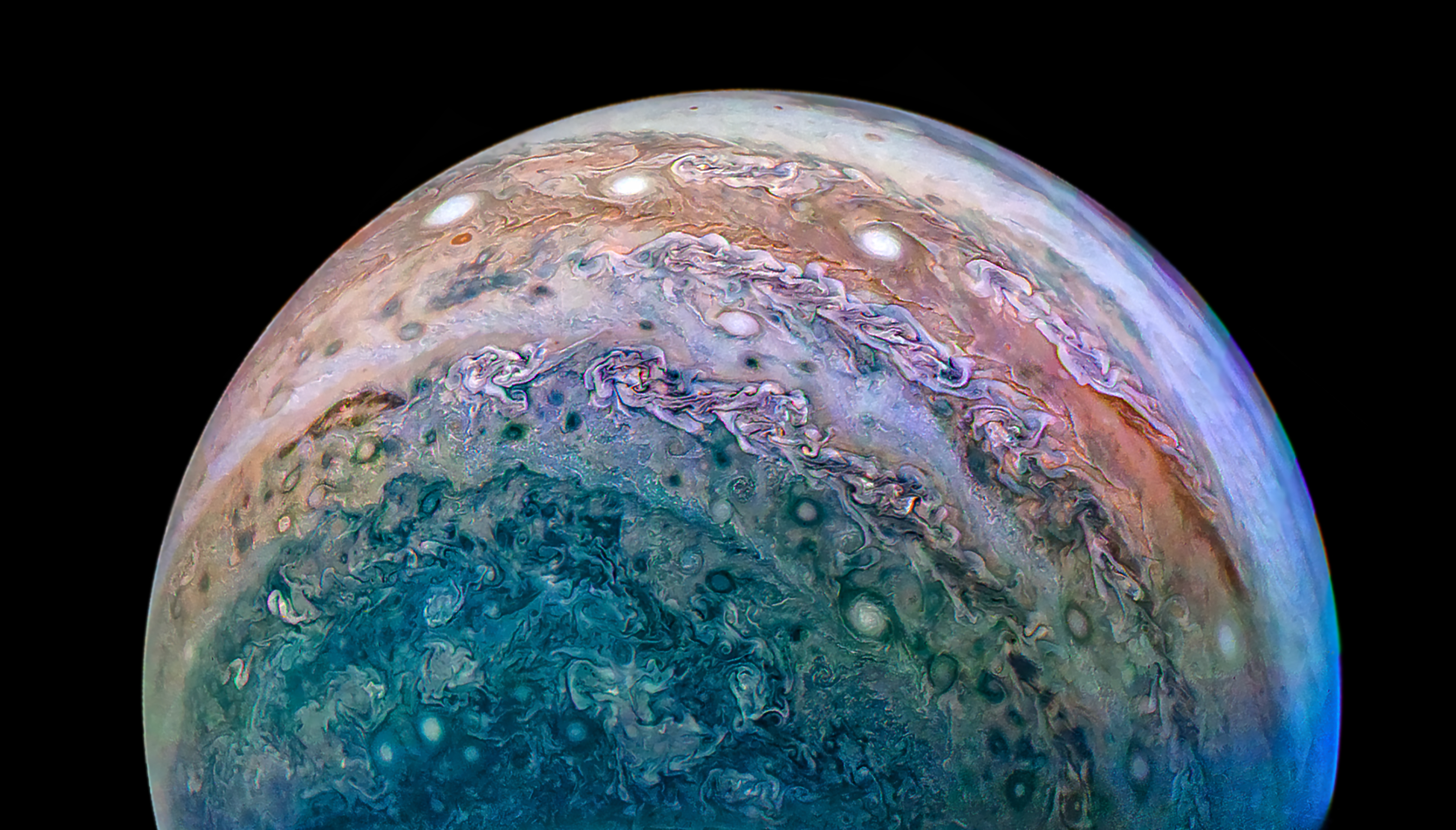Juno is a spacecraft that studies the planet Jupiter. It is the second spacecraft to orbit Jupiter. Galileo was the first. Juno entered into orbit around Jupiter in July 2016. Since then, data collected by the craft have helped scientists learn about Jupiter’s magnetic activity, atmosphere, and weather. Juno is a mission of the United States National Aeronautics and Space Administration (NASA).

Juno measures water in Jupiter’s atmosphere with an instrument called a microwave radiometer. The measurements may provide clues about how Jupiter was formed. The craft also probes the atmosphere’s composition and temperature, the motions of its clouds, and its other properties. Juno’s cameras photograph Jupiter in ultraviolet, visible, and infrared light. The spacecraft has captured spectacular images of huge storms, jet streams, and other striking features of Jupiter’s atmosphere.
Juno also maps Jupiter’s magnetic and gravitational fields, revealing the planet’s internal structure. Juno’s magnetometer collects data on the planet’s magnetosphere, the region of space dominated by Jupiter’s magnetic field. 

Juno conducts observations from a highly elliptical (oval-shaped) orbit. The orbit brings the craft as close as 3,100 miles (5,000 kilometers) above Jupiter’s cloud tops. Its farthest distance from the planet is well beyond the orbit of the moon Callisto, which orbits Jupiter at a distance of about 1,200,000 miles (1,900,000 kilometers). The elongated orbit protects Juno from spending too much time in Jupiter’s intense radiation belts. Yet it still enables the spacecraft to dive near the planet for several hours at a time.
Juno is powered by three massive solar panels. Each panel measures nearly 9 feet by 30 feet (3 meters by 9 meters). The sunlight that reaches Jupiter is dim because the planet is so far from the sun. Solar panels at such a distance must have a large surface area to generate sufficient power.
NASA launched Juno on Aug. 5, 2011. It intended for Juno to study Jupiter for 15 months. But Juno’s engine did not work properly as the spacecraft entered orbit around Jupiter, prompting scientists and engineers to rethink the mission. In early 2017, they announced that Juno would remain in an orbit that was even more elongated than what had been planned. Therefore, it would take almost four times longer to perform the scheduled observations. In 2021, Juno’s mission was extended. The extended mission includes closer study of Jupiter’s poles, as well as flybys of the planet’s moons and rings. The spacecraft is expected to operate until 2025.
The craft was named after Juno, the queen of the gods and the wife of the god Jupiter in Roman mythology. The Juno mission is managed by the Jet Propulsion Laboratory in Pasadena, California.
